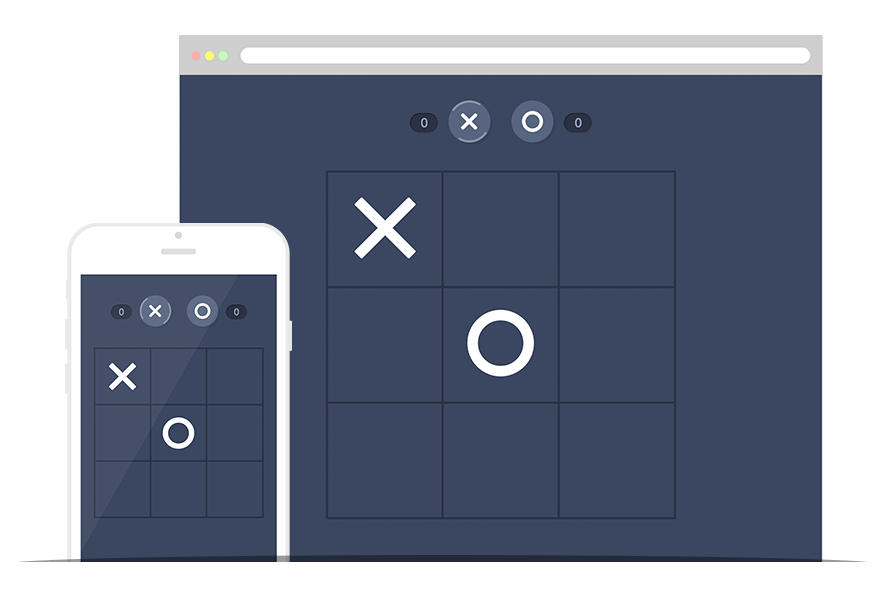Tic-Tac-Toe game written in vanilla javascript using redux-like approach.
It uses the unidirectional data flow:
1. Single source of truth
One single store.js:
function Store() {
this.state = {};
this.state = this.update(this.state, {});
// `this.update()` will return the initial state:
// ----------------------------------------------
// {
// grid: ['', '', '', '', '', '', '', '', ''],
// turn: 'x',
// score: { x: 0, o: 0 },
// winnerSequence: [],
// turnCounter: 0,
// player: ''
// }
}2. State is read-only
Game.js dispatches actions whenever needed:
this.$table.addEventListener('click', function(event) {
var state = store.getState();
// [Prevent dispatch under certain conditions]
// Otherwise, trigger `SET_X` or `SET_O`
store.dispatch({
type: state.turn === 'x' ? 'SET_X' : 'SET_O',
index: parseInt(index, 10)
});
});3. Changes are made with pure functions
Store.js: reducers receive actions and return new state.
// Reducer (pure function)
function updatePlayer(player, action) {
switch (action.type) {
case 'PICK_SIDE':
return action.side;
default:
return player || '';
}
}
// Call reducer on Store.update()
Store.prototype.update = function(state, action) {
return {
player: updatePlayer(state.player, action)
// [...other cool stuff here]
};
};4. After update, UI can render latest state
Game.js handles UI changes:
var store = require('./store');
var gridView = require('./grid-view');
TicTacToe.prototype.eventListeners = function() {
store.subscribe(this.render.bind(this));
};
TicTacToe.prototype.render = function(prevState, state) {
// You can even check whether new state is different
if (prevState.grid !== state.grid) {
this.gridView.render('grid', state.grid);
}
};Further details about implementation you can find on this page.
The game has been tested in the following platforms:
| Latest | Latest | 10+ | Latest |
|---|---|---|---|
 |
 |
 |
 |
- Server: NodeJS / Express / Socket.io
- Client: VanillaJS / Redux
- Tools: Gulp / Webpack / Sass / Heroku
Please report on the issues tab.

